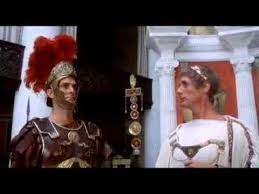February 17, 2018 :
:
On February 17, 1776, the first volume of Edward Gibbon’s seminal “The History of the Rise and Fall of the Roman Empire” was published in London. Gibbon’s painfully researched six volume master work was unique at the time because of the historian’s heavy utilization of primary sources. Although his book was published before Washington crossed the Delaware River, Gibbon’s methodology is still a model for historians, today.
This 1902-page tome has been very useful to me over the years. Just dropping Gibbon’s name in any college history class discussion was worth an extra half grade regardless of the class subject. Years later, as a sales guy I used the unwieldy book as a prop when I engaged in the fine art of lobby sitting. If the receptionist said that the executive who had been ducking my phone calls was too busy to see me I’d say “No problem- I’ll just sit here and read this book I just started. Have you read it yet?” Usually within 15 or 20 minutes the exec would appear and give me some time just to get me out of the lobby.
Condensing 1902 pages into 600 words
Rome began its territorial expansion around 500 BC and by the first century BC had become the dominant maritime power in the Mediterranean. The term Roman Empire covers a period starting in 31 BC when Rome conquered Egypt and ended in 476 AD when the Germanic leader Odoacer deposed Emperor Romulus Augustulus. For 500 years, the empire reigned over the world and its citizens enjoyed unprecedented peace and prosperity including the Pax Romana (Roman peace) established by Augusta which lasted over 200 years.
At its height, the Roman Empire spanned Northern Africa, Asia Minor and most of Europe. In 286 AD, the emperor Diocletian decided that the empire had become too unwieldy to govern from Rome. He split the empire into the western empire with Milan as its capital and the eastern empire with its capital in Constantinople (now Istanbul).
For the next century, the western empire was constantly under attack from Germanic tribes looking for new land for their increasingly agrarian populations. In 410 the Visigoths sacked the city of Rome and in 455 the city was invaded by the Vandals. Rome went into a downward spiral that lasted until AD 476 when Odoacer dealt Rome its deathblow. While the western Roman Empire came to an end in 476, the eastern Roman Empire, also known as the Byzantine Empire, survived until 1453 when Constantinople fell to the Turks.
So, what went wrong?
Historians continue to debate the primary reasons that the Roman Empire expired. Gibbon believed that centuries of prosperity made the Roman citizens weak as evidenced by the Roman army’s employment of foreign mercenaries to fight the empire’s battles. Gibbon also blamed Rome’s rejection of paganism and embrace of Christianity. Paganism held that the emperor was a god which in Gibbon’s opinion, created a sense of unity and martial purpose for the Romans. Christianity was relatively pacifistic and taught that that eternal life was superior to success on earth. Gibbon propounded that Roman unity was destroyed by Christianity particularly because Christians were split into many groups that quarreled constantly over dogma.
Modern historians generally agree on some of the major causes of the empire’s disintegration and history has witnessed similar declines (See Portugal, Spain, Great Britain, etc.).
- After the split, the two empires constantly disagreed about resource allocations and military matters. Because of the relative strength of the eastern empire, barbarian tribes preferred to invade the western territories. Many of the Germanic tribes were forced out of their homelands by the Huns and they were able to take advantage of the western empire’s increasing inability to defend its vast borders.
- By the time Diocletian divided the empire, he had already begun to hire foreign mercenaries to supplement Roman soldiers. Increasingly the army hired Germanic tribesmen, many of whom would eventually participate in rebellions and sackings of Roman cities.
- The constant wars drained the empire’s financial resources and resulted in a severe labor shortage. Because the military was preoccupied defending its borders, troops could no longer engage in conquering foreign lands. Thus, the empire’s supply of slaves greatly diminished and without new slaves, Rome could no longer sustain its agricultural output nor maintain its infrastructure.
In summary, we should still celebrate the old saying, “When in Rome, do as the Romans do”. At the same time, our leaders should remember the words of George Santayana “Those who cannot remember the past are condemned to repeat it.”
Have a great weekend
If you are looking for top-notch marketing support, visit www.blackdotmessaging.com
Ted Curtin

